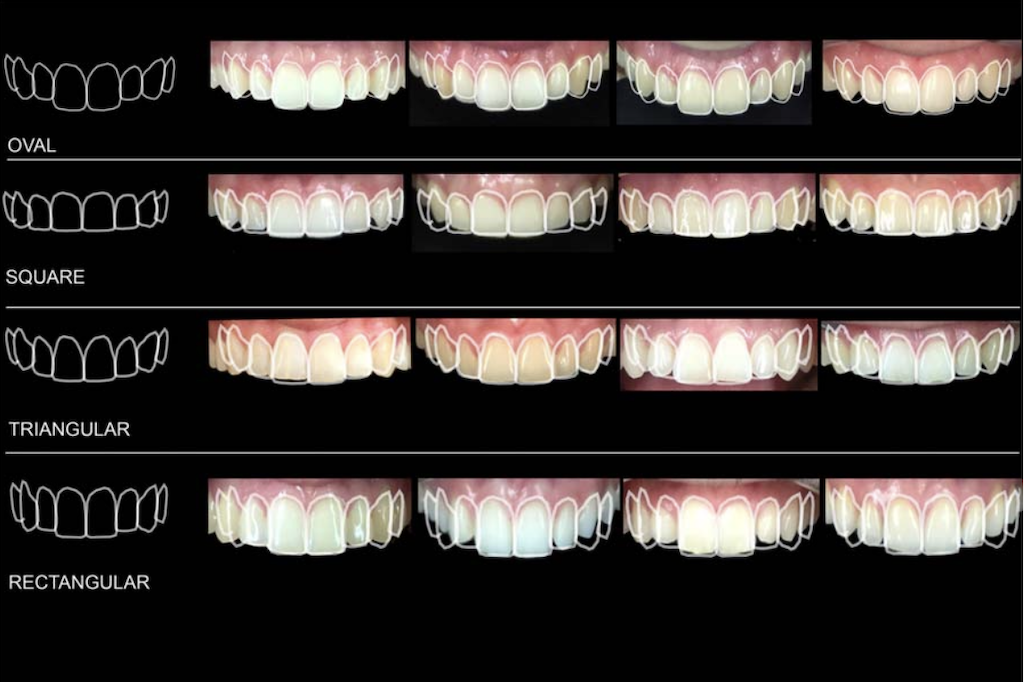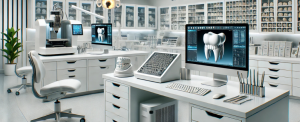
In order to provide a scientific evidence that could answer this question, we found the following literature:
Key article
Title: Gender differences in the form of maxillary central incisors analyzed using AutoCAD software
• This is a study in The Journal of Prosthetic Dentistry.
Summary: The authors compared tooth form (classified as oval, triangular, or quadrangular) of the maxillary right central incisor in males vs. females (Brazilian high school students).
Findings:
• Oval form was most common in both sexes.
• Triangular form was significantly more frequent in men.
• Quadrangular form was more frequent in women.
Another relevant article
Title: Computer-based evaluation of gender identification and morphologic classification of tooth face and arch forms also in The Journal of Prosthetic Dentistry.
Summary: Experts evaluated photos of faces, tooth arches, and anterior teeth to see how well they could judge sex (male vs. female) and classify morphologic features, and also to assess correlations among face, arch, and tooth forms.
Results: The experts were not very reliable at correctly identifying sex based only on anterior tooth or arch/face morphology. Correlations among face-form, arch-form, and tooth form were weak.
Articles from The Journal of Prosthetic Dentistry
1. Gender differences in the form of maxillary central incisors analyzed using AutoCAD software
- Studied Brazilian high school students.
- Compared oval, triangular, and quadrangular forms of the maxillary right central incisor.
- Found oval form most common in both sexes; triangular more frequent in men; quadrangular more frequent in women
2. Computer-based evaluation of gender identification and morphologic classification of tooth face and arch forms
- Evaluated whether specialists can identify gender and morphological form (face, tooth, arch) from photos.
- Found overall correlation among face, arch, tooth forms was low; experts were not reliably distinguishing sex based on anterior tooth shape alone.
Related / Other Important Studies relevant to tooth dimorphism.
3. Assessment of the correlation between anterior tooth form and gender – a 3D analysis in humans
- Uses 3D digital models of incisors and canines.
- Found significant correlation between gender and tooth shape of maxillary central and lateral incisors and canines (without size standardization).
4. Prevalence of tooth forms and their gender correlation
- Evaluated tooth shape (pure and hybrid forms) and sees how often shape corresponds to gender.
- Found hybrid tooth shapes are much more common; correspondence between tooth shape and gender was not reliable.
5. Systematic review/meta-analysis: Tooth crown mesiodistal measurements for determining sexual dimorphism across populations
- Broad study of many populations.
- Shows that while there is some sexual dimorphism in crown measurements (mesiodistal), magnitude varies by tooth type and population; canines and second molars often have higher dimorphism.
When we review, compare and analyze this articles we found this conclusions
- Shape Studies (J Prosthetic Dentistry, 2002 & 2011) Findings:
- 2011 study (AutoCAD, Brazil): Oval form was the most common in both men and women.
- Triangular forms appeared more often in men.
- Quadrangular forms were more frequent in women.
- 2002 computer-based evaluation: Prosthodontists were not very reliable at identifying sex from tooth, face, or arch form.
- Correlation between tooth form and sex was weak.
Interpretation
There are tendencies (e.g., women somewhat more quadrangular, men somewhat more triangular), but not strong enough to reliably predict sex from tooth shape alone.
2. 3D Digital Studies (2012 and later) Findings:
- When teeth were analyzed digitally in 3D, some correlations between gender and tooth morphology (especially maxillary central/lateral incisors and canines) were found.
- But when tooth size was normalized, the differences in shape diminished.
Interpretation
Much of what looks like “shape” difference may actually reflect tooth size dimorphism (men usually have larger crowns).
3. Population Studies & Systematic Reviews Findings:
- Sexual dimorphism is clear in tooth size (especially canines and molars).
- Tooth shape, however, is much more variable — influenced by genetics, ethnicity, and environment.
- Hybrid forms (mix of oval, triangular, quadrangular) are common, making classification difficult.
Interpretation
Tooth shape does not show consistent, universal male–female differences across populations.
Overall Conclusion
- Yes: Some studies find statistical trends (men → more triangular, women → more quadrangular).
- No: There is no clear or reliable “female tooth shape” versus “male tooth shape” that works across individuals or populations.
- Tooth size dimorphism is stronger and more consistent than shape dimorphism.
- Clinically (e.g., in prosthodontics, forensic dentistry, esthetics), tooth shape should not be used alone to determine sex.
So, if we put it simply:
There isn’t a clear, diagnostic female tooth shape versus male. What exists are subtle tendencies, but they overlap too much to serve as a reliable marker.
In order for you to have a full understanding of our approach to this matter, we invite you to read this following full article, from which you can depict your own conclusions.
Published by Doctor Daslav Ilic



